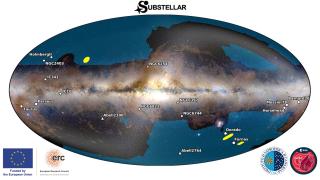
Stars give light to the universe, and their interiors are the furnaces where chemical elements are forged. Research in this field at the IAC seeks an understanding of the physics and the life cycle of stars, from the most massive that end up in supernovae and drive the chemical evolution of galaxies, to those with masses smaller than the Sun's and longer lifetimes than the age of the universe.
The final remnants from stellar evolution, neutron stars and black holes created by supernova explosions, as well as white dwarfs left behind by stars with smaller masses, allow us to explore the physics of intense gravitational fields. Gaseous nebulae and circumstellar material provide as well valuable and complementary information on star formation and their relationship with the environment that surrounds them.




